Radio Astronomy News
LMRO 8.5 Meter Dish Maps Small Magelanic Cloud
LMRO News, May 15, 2022
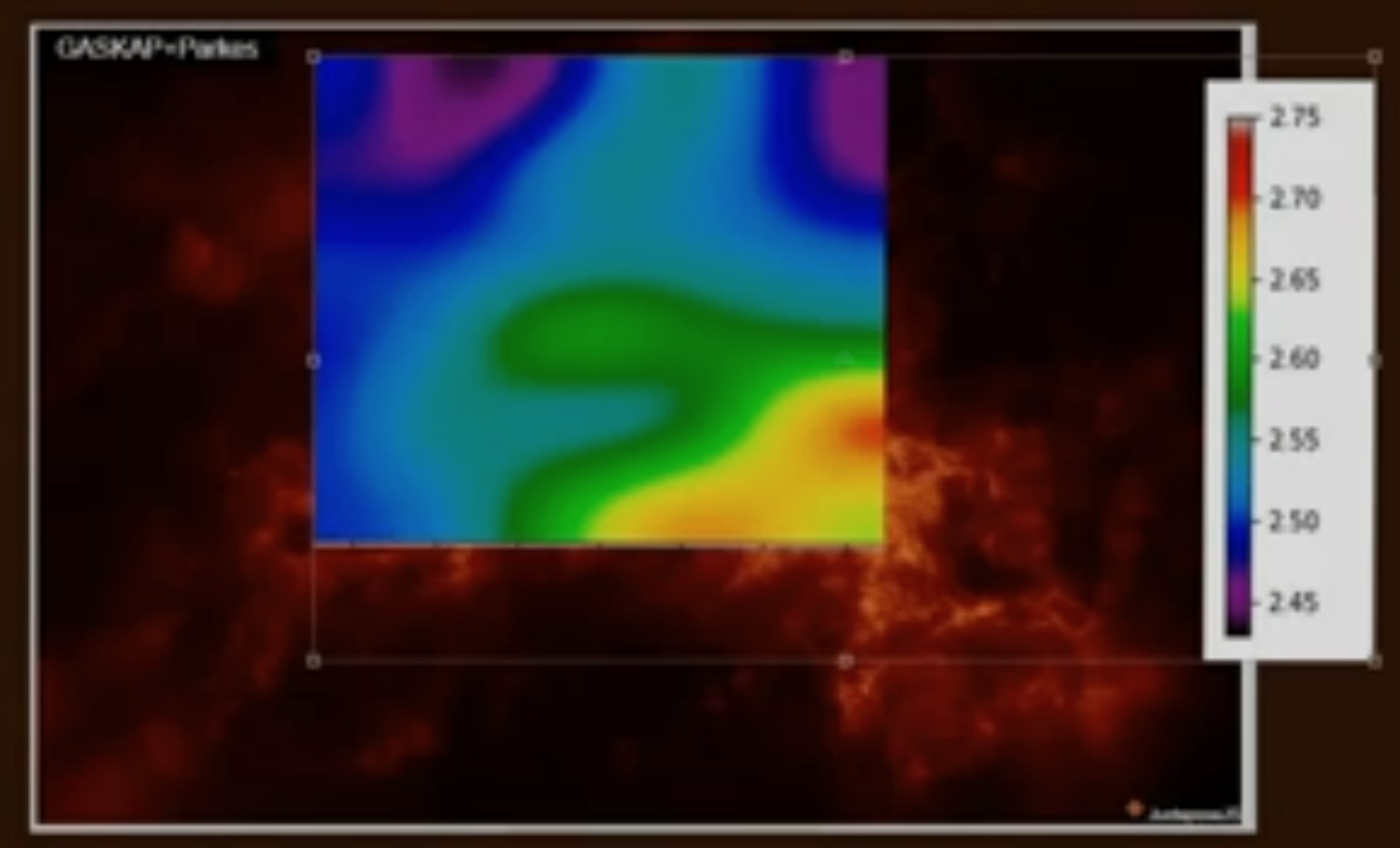
During late April and early March of 2022, Stephen Bentley, pains takingly plotted by hand, Neutral Hydrogen Radio Flux levels of points in the sky around the Small Magelanic Cloud, Crux and other regions of the sky. What is most satisfying about this achievment is that it was using the recently commisioned 8.5 Meter Radio Astronomy Dish at the Leon Mow Radio Observatory. The reason he had to hand plot the map is that not all automation systems are in place yet but enough was in place to give this instrument a good test. With the data that Steve aquired another member of the Radio Astronomy Section, Joe Magee, put his hand for the first time to coding in the programming language of Python. With the Python programming language and a bit of patience Joe was able to produce the colour gradient map of the Small Magelanic Cloud seen here. The image behind the colour gradient is from a composite image of the SMC produced by the Parks GASKAP project that Joe used to justify his image. Joe gives a description of his work in this Youtube video https://www.youtube.com/watch?v=VpIDMucbbCs
This is a huge achievement for the Radio Astronomy Section who have been aiming for this goal for some twenty years.
Much congratulations.
ALMA Scientists Uncover the Mystery of Early Massive Galaxies Running on Empty
NRAO News. September 22, 2021.
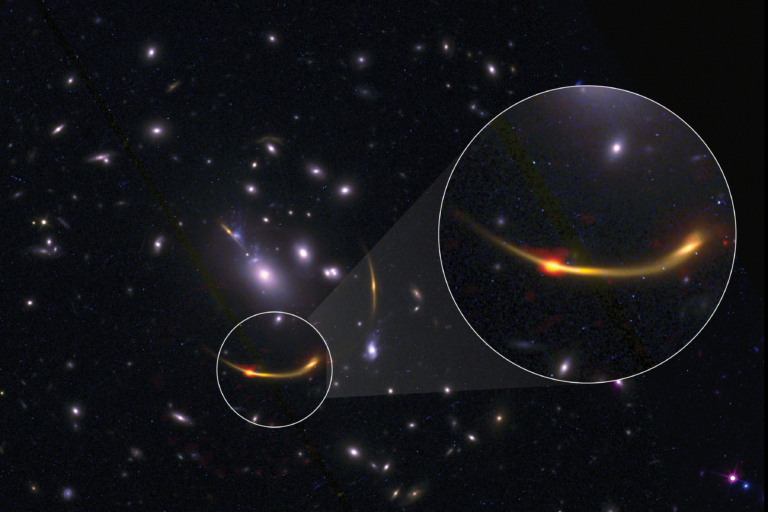 Early massive galaxies that formed in the three billion years following the Big Bang should have contained large amounts of cold hydrogen gas, the fuel required to make stars. But scientists observing the early Universe with the Atacama Large Millimeter/submillimeter Array (ALMA) and the Hubble Space Telescope have spotted something strange: half a dozen early massive galaxies that ran out of fuel. The results of the research are published today in Nature.
Early massive galaxies that formed in the three billion years following the Big Bang should have contained large amounts of cold hydrogen gas, the fuel required to make stars. But scientists observing the early Universe with the Atacama Large Millimeter/submillimeter Array (ALMA) and the Hubble Space Telescope have spotted something strange: half a dozen early massive galaxies that ran out of fuel. The results of the research are published today in Nature.
Known as 'quenched' galaxies—or galaxies that have shut down star formation—the six galaxies selected for observation from the REsolving QUIEscent Magnified galaxies at high redshift, or the REQUIEM survey, are inconsistent with what astronomers expect of the early Universe.
'The most massive galaxies in the Universe lived fast and furious, creating their stars in a remarkably short amount of time. Gas, the fuel of star formation, should be plentiful at these early times in the Universe,' said Kate Whitaker, lead author on the study, and assistant professor of astronomy at the University of Massachusetts, Amherst. 'We originally believed that these quenched galaxies hit the brakes just a few billion years after the Big Bang. In our new research, we’ve concluded that early galaxies didn’t actually put the brakes on, but rather, they were running on empty.'
To better understand how the galaxies formed and died, the team observed them using Hubble, which revealed details about the stars residing in the galaxies. Concurrent observations with ALMA revealed the galaxies’ continuum emission—a tracer of dust—at millimeter wavelengths, allowing the team to infer the amount of gas in the galaxies. The use of the two telescopes is by careful design, as the purpose of REQUIEM is to use strong gravitational lensing as a natural telescope to observe dormant galaxies with higher spatial resolution. This, in turn, gives scientists a clear view of galaxies’ internal goings-on, a task often impossible with those running on empty.
ALMA Scientists Uncover the Mystery of Early Massive Galaxies Running on Empty
IMAGE RELEASE: Moon’s Tycho Crater Revealed in Intricate Detail
NRAO News. September 21, 2021.
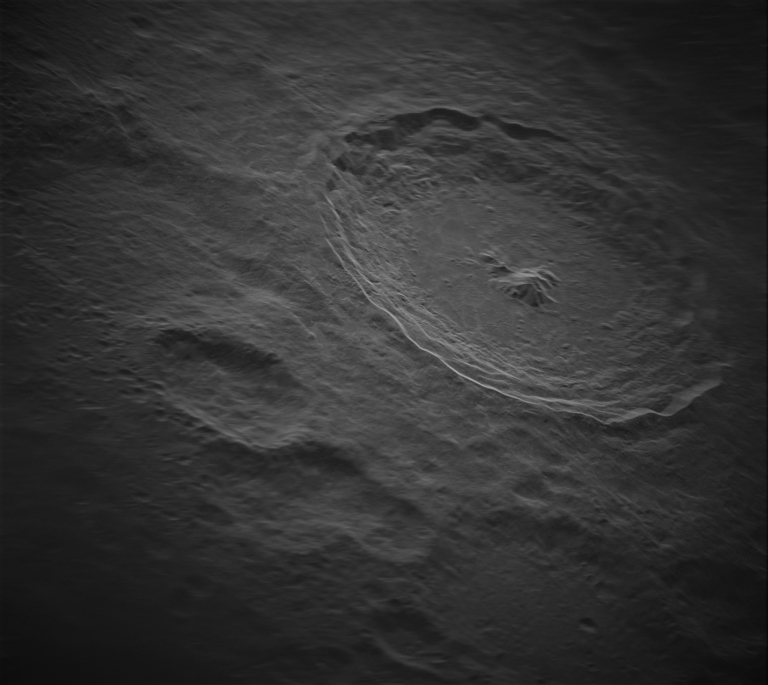 The National Science Foundation’s Green Bank Observatory (GBO) and National Radio Astronomy Observatory (NRAO), and Raytheon Intelligence & Space (RI&S) have released a new high-resolution image of the Moon, the highest-ever taken from the ground using new radar technology on the Green Bank Telescope (GBT).
The National Science Foundation’s Green Bank Observatory (GBO) and National Radio Astronomy Observatory (NRAO), and Raytheon Intelligence & Space (RI&S) have released a new high-resolution image of the Moon, the highest-ever taken from the ground using new radar technology on the Green Bank Telescope (GBT).
The resolution of the new Tycho Crater image is close to five meters by five meters and contains approximately 1.4 billion pixels. The image covers an area of 200km by 175km, ensuring that involved scientists and engineers captured the entire crater, which measures 86km in diameter. 'This is the largest synthetic aperture radar image we have produced to date with the help of our partners at Raytheon,' said Dr. Tony Beasley, Director of the National Radio Astronomy Observatory, and vice president for Radio Astronomy at Associated Universities, Inc. (AUI). 'While more work lies ahead to improve these images, we’re excited to share this incredible image with the public, and look forward to sharing more images from this project in the near future.'
The GBT— the world’s largest fully steerable radio telescope—was outfitted in late 2020 with new technology developed by Raytheon Intelligence & Space and GBO, allowing it to transmit a radar signal into space. Using the GBT and antennas from the Very Long Baseline Array (VLBA), several tests have been conducted since that time, focusing on the surface of the Moon, including the Tycho Crater and NASA Apollo landing sites.
How is this low-powered radar signal translated into images we can see? 'It’s done with a process called Synthetic Aperture Radar, or SAR,' explained Galen Watts, a GBO engineer. 'As each pulse is transmitted by the GBT, it’s reflected off the target, the surface of the moon in this case, and it’s received and stored. The stored pulses are compared to each other and analyzed to produce an image. The transmitter, the target, and the receivers are all constantly moving as we move through space. While you might think this could make producing an image more difficult, it actually yields more important data.'
IMAGE RELEASE: Moon’s Tycho Crater Revealed in Intricate Detail
ALMA Reveals Carbon-Rich, Organic Birth Environments of Planets
NRAO News. September 15, 2021.
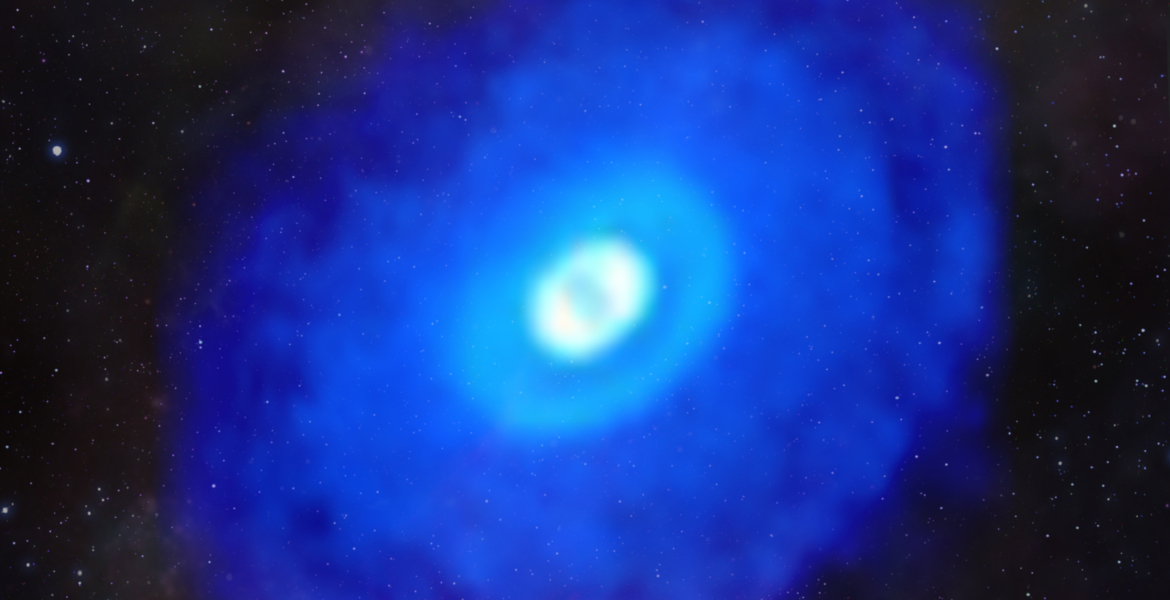 An international collaboration of scientists using the Atacama Large Millimeter/submillimeter Array (ALMA) has completed the most extensive chemical composition mapping of the protoplanetary disks around five nearby young stars at high resolution, producing images that capture the molecular composition associated with planetary births, and a roadmap for future studies of the makeup of planet- and comet-forming regions. The new study unlocks clues about the role of molecules in planetary system formation, and whether these young planetary systems in the making have what it takes to host life. The results of the program, appropriately called MAPS, or Molecules with ALMA at Planet-forming Scales, will appear in an upcoming 20-paper special edition of The Astrophysical Journal Supplement Series.
An international collaboration of scientists using the Atacama Large Millimeter/submillimeter Array (ALMA) has completed the most extensive chemical composition mapping of the protoplanetary disks around five nearby young stars at high resolution, producing images that capture the molecular composition associated with planetary births, and a roadmap for future studies of the makeup of planet- and comet-forming regions. The new study unlocks clues about the role of molecules in planetary system formation, and whether these young planetary systems in the making have what it takes to host life. The results of the program, appropriately called MAPS, or Molecules with ALMA at Planet-forming Scales, will appear in an upcoming 20-paper special edition of The Astrophysical Journal Supplement Series.
Planets form in the disks of dust and gas—also called protoplanetary disks—surrounding young stars. The chemical makeup of—or molecules contained within—these disks may have an impact on the planets themselves, including how and where planetary formation occurs, the chemical composition of the planets, and whether those planets have the organic composition necessary to support life. MAPS specifically looked at the protoplanetary disks surrounding the young stars IM Lup, GM Aur, AS 209, HD 163296, and MWC 480, where evidence of ongoing planet formation has already been detected. The project led to multiple exciting discoveries, including a link between dust and chemical substructures and the presence of large reservoirs of organic molecules in the inner disk regions of the stars.
'With ALMA we were able to see how molecules are distributed where exoplanets are currently assembling,' said Karin Öberg, an astronomer at the Center for Astrophysics | Harvard & Smithsonian (CfA) and the Principal Investigator for MAPS. 'One of the really exciting things we saw is that the planet-forming disks around these five young stars are factories of a special class of organic molecules, so-called nitriles, which are implicated in the origins of life here on Earth.'
ALMA Reveals Carbon-Rich, Organic Birth Environments of Planets
NRAO Congratulates Winners of Breakthrough Prize Awards
NRAO News. September 13, 2021.
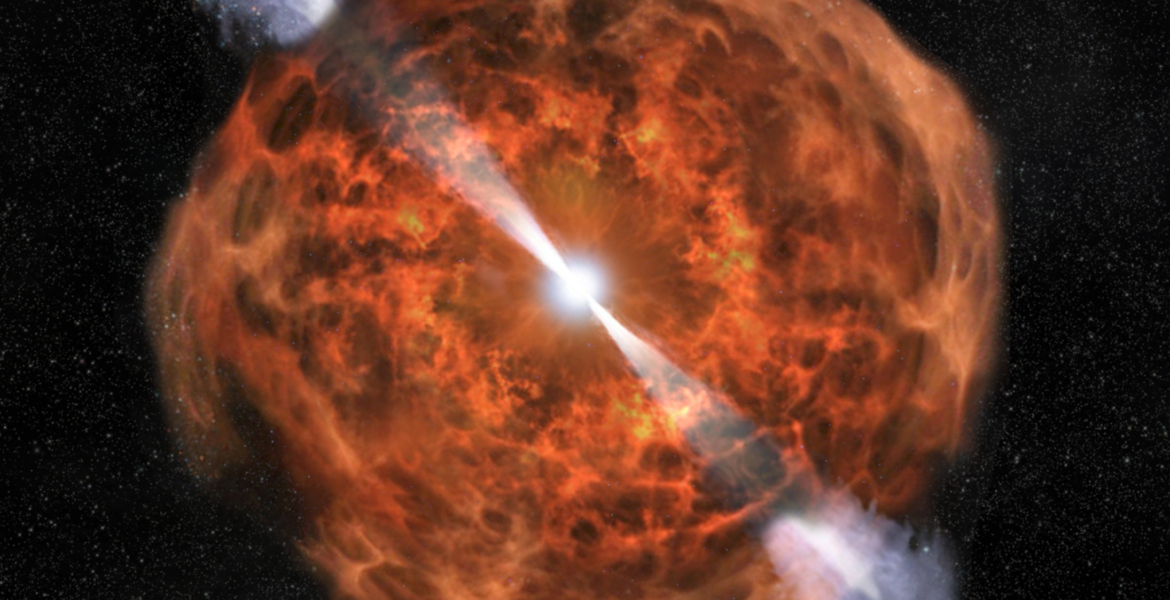 The National Radio Astronomy Observatory (NRAO) congratulates the four astronomers honored by the Breakthrough Prize Foundation which awarded them the 2022 New Horizons in Physics Prize. Alessandra Corsi of Texas Tech University; Gregg Hallinan and Mansi Manoj Kasliwal, both of Caltech; and Raffaella Margutti of the University of California, Berkeley, were recognized for 'leadership in laying foundations for electromagnetic observations of sources of gravitational waves, and leadership in extracting rich information from the first observed collision of two neutron stars.'
The National Radio Astronomy Observatory (NRAO) congratulates the four astronomers honored by the Breakthrough Prize Foundation which awarded them the 2022 New Horizons in Physics Prize. Alessandra Corsi of Texas Tech University; Gregg Hallinan and Mansi Manoj Kasliwal, both of Caltech; and Raffaella Margutti of the University of California, Berkeley, were recognized for 'leadership in laying foundations for electromagnetic observations of sources of gravitational waves, and leadership in extracting rich information from the first observed collision of two neutron stars.'
The researchers made landmark observations of the merger of two neutron stars in August of 2017 and the lengthy aftermath of that merger. The event generated gravitational waves that were directly detected by the LIGO and VIRGO gravitational-wave observatories. When the event later was seen emitting gamma rays, X-rays, visible light, and radio waves, it became the first astronomical event ever seen with both gravitational waves and electromagnetic waves.
The prize winners used the National Science Foundation’s Karl G. Jansky Very Large Array (VLA) and Very Long Baseline Array (VLBA) to study the aftermath of the merger for months afterward, yielding key information about the nature and consequences of the collision.
'This was a watershed in astrophysics, and NRAO’s radio telescopes were vital tools for unraveling the workings of this exciting event. We are very happy to see our scientific colleagues who made expert use of the VLA and the VLBA in that effort gain this well-deserved recognition,' said NRAO Director Tony Beasley.
NRAO Congratulates Winners of Breakthrough Prize Awards
New Receivers Achieve First Light, Set Record for Observational Capabilities at ALMA
NRAO News. September 7, 2021.
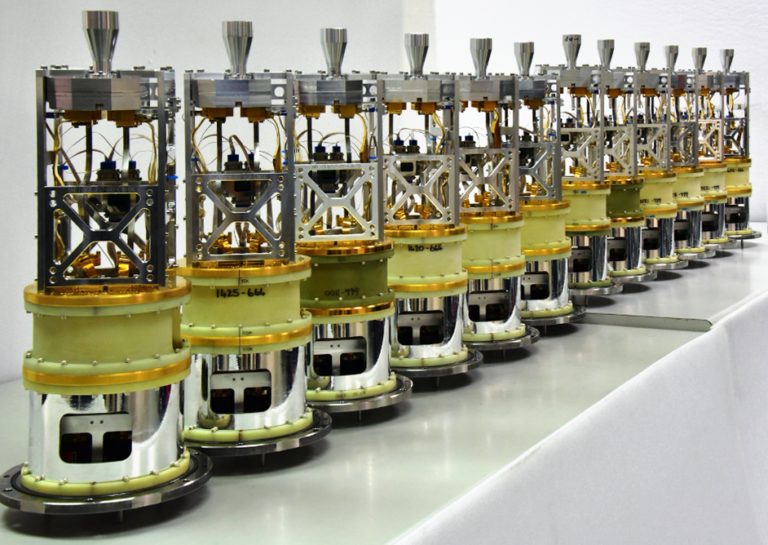 A new set of receivers installed on antennas at the Atacama Large Millimeter/submillimeter Array (ALMA) have achieved first light. With it, they set a new record for the longest wavelengths visible with the radio array. The achievement has opened a window on the Universe previously inaccessible at the telescope, thanks to an international team of engineers, including engineers from the National Radio Astronomy Observatory (NRAO).
A new set of receivers installed on antennas at the Atacama Large Millimeter/submillimeter Array (ALMA) have achieved first light. With it, they set a new record for the longest wavelengths visible with the radio array. The achievement has opened a window on the Universe previously inaccessible at the telescope, thanks to an international team of engineers, including engineers from the National Radio Astronomy Observatory (NRAO).
Scientists achieved first light with the Band 1 receiver on August 14, 2021, with successful observations of the edge of the Moon, followed by the first successful interferometry test observations using two Band 1 receivers on August 17, and acquisition of the first radio spectrum on August 27. During the tests, scientists observed and successfully received signals from multiple celestial objects, including Solar System planets Venus and Mars, Orion KL—a cluster of stars within a molecular cloud, VY Canis Majoris—a red hypergiant variable pulsating star, and quasar 3C 279.
ALMA observes the Universe over a wide range of radio wavelengths within the millimeter and submillimeter range of the electromagnetic spectrum with the help of specialized receivers. ALMA’s 66 antennas were previously equipped with eight different receivers, operating at wavelengths from 3.6mm (ALMA Band 3) to 0.3mm (ALMA Band 10). These new Band 1 receivers are sensitive to radio waves between 6 and 8.5mm in length, expanding the capability of the antennas to 'see' more wavelengths of light from distant cosmic sources.
New Receivers Achieve First Light, Set Record for Observational Capabilities at ALMA